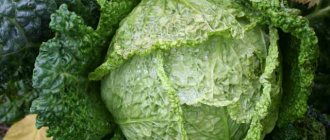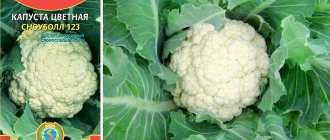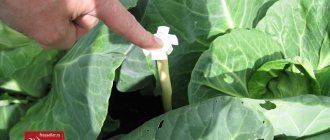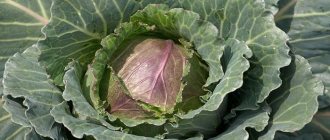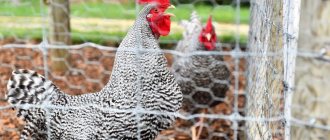Japanese mizuna kale, or mitsuna salad as it is also called, is still considered something extraordinary in our country. Although such a plant is gaining more and more supporters in its ranks every day. It is often called cabbage for the lazy, because it does not require much care and can even be grown at home in a pot. This plant has a pleasant spicy taste, in addition, it is incredibly beautiful and healthy, for which it is valued in its homeland in Japan.
Description
If we talk about Japanese cabbage from a botanical point of view, then Mizuna belongs to green pepper salads, to the genus Cabbage of the Cruciferous family.
This type of leafy vegetable is still less popular in Russia, although Chinese and Chinese cabbage, its closest relatives, are already loved and appreciated by Russians. Japanese Mizuna cabbage is used mainly for preparing vitamin salads. The Japanese themselves call the plant a help for the lazy, since it is unpretentious in care. Growing Japanese Mizuna cabbage even on a windowsill is not difficult, you just need to get acquainted with some of the nuances.
Appearance
Japanese cabbage has two varieties:
Mizuna has entire, long, lance-shaped leaves;
Mizuna cabbage, which will be discussed in our article, has lacy leaves with a noticeable dissection. When examining the plant at close range, it seems as if someone deliberately cut the leaves with scissors. Just look at the photo, how beautiful it is!
The leaf blades of Japanese cabbage are located on long thin petioles, collected in a lush rosette. During growth, it forms a dense bunch. Depending on the variety of Mizuna cabbage, the leaves can be bright green or reddish-brown. The beauty and unusual shape of leaf blades is valued by landscape designers.
A head of cabbage does not form on Japanese cabbage, despite the name. The main value of the plant is its vitamin-rich leaves, which grow constantly, which allows them to be cut during the entire growing season.
Flowering does not make the plant decorative because the light yellow buds are too small. The seeds of Japanese cabbage are slightly smaller than poppy seeds.
Important! Having collected seed once, you can use it for three years in a row. By the end of the growing season, in addition to the mass of leaves, cabbage will produce a small edible root vegetable about 15 cm long. It is similar in taste and shape to rutabaga
It is similar in taste and shape to rutabaga
By the end of the growing season, in addition to the mass of leaves, cabbage will produce a small edible root vegetable about 15 cm long. It is similar in taste and shape to rutabaga.
Characteristics
Japanese Mizuna cabbage is an early ripening plant; you can cut off the leaves within a month or a month and a half after sowing the seeds (depending on the variety).
The salad vegetable is frost-resistant; seeds can germinate at -2-3 degrees. And cabbage itself can withstand slight frosts in the autumn without much damage. This characteristic makes it possible to cultivate in many Russian regions and grow the plant in gardens from May to September.
Advice! If you want to have vitamin-rich Mizuna kale in your diet throughout the year, you can plant it in a heated greenhouse or on a windowsill along with other greens.
The Japanese vegetable is a short-day plant; this is important to know for those who decide to grow it. Experienced gardeners advise shading cabbage plantings in the afternoon to avoid the formation of shoots
Application
Mizuna is prized for its mild and spicy flavor. Many lovers compare it with the taste of mustard, radish or arugula. It is recommended to eat Japanese cabbage in early spring to avoid vitamin deficiency. The leaves are used both fresh, adding to all kinds of salads (with meat, vegetables, fish and fruits) and sandwiches (with cheese and feta cheese), and for preparing soups, stews, and marinades.
Storage
Fresh leaves of Japanese Mizuna cabbage do not last long, as do salads made from them. If you have harvested Japanese cabbage and want to keep it longer, do not remove the root. In addition, cabbage can be prepared for the winter to diversify the diet.
Attention! Japanese Mitsuni cabbage is very tasty in salted, pickled form, you can also dry it
Characteristic
Mizuna cabbage is a fairly frost-resistant crop. Its seeds can germinate even at -2°C. The variety also tolerates autumn frosts without any negative consequences. This quality allows Mizuna lettuce to be grown in many regions of Russia.
Productivity and fruiting
This leaf lettuce is an early ripening plant - you can cut the leaves 30-35 days after sowing the seeds. If you plant the Mizuna variety in the spring, the green harvest can be harvested until October and even November in areas with a warm climate. By the second year of life, the lettuce forms a peduncle that produces seeds.
In Russia, the Mizuna variety can be planted several times in a row and harvested in May, July and August.
Application area
Mizuna Japanese cabbage is mainly used for cutting into vitamin salads. The culture is highly valued in cooking for its spicy, mild taste, somewhat reminiscent of mustard.
Cabbage is also added to sandwiches with cheese or feta cheese and soups. Salad-based marinades are no less popular. Finally, the Mizuna variety can be dried or pickled for the winter.
Important! Japanese Mizuna cabbage does not stay fresh for long. If you do not remove the root of the plant, the shelf life can be extended.
Resistance to diseases and pests
Japanese cabbage Mitsuna rarely gets sick, however, beds with this crop attract many pests. The greatest threat to lettuce is:
- aphid;
- mole cricket;
- cruciferous flea beetle;
- snails and slugs.
Young plantings are especially often attacked by the cruciferous flea beetle.
Advantages and disadvantages of the variety
Japanese Mitsuna cabbage has the following strong qualities:
- resistance to the formation of arrows;
- immunity to clubroot, which often affects white cabbage;
- the ability to cut leaves throughout the season;
- highly decorative - the variety can be grown as a border plant in a flower bed.
The disadvantage of the variety is the fact that Mitsuna cabbage attracts the cruciferous flea beetle, which can very quickly damage a significant part of the plantings. The fight against this pest is complicated by the inability to use chemical insecticides, since cabbage quickly absorbs chemicals.
Varieties of Japanese cabbage
The State Register of the Russian Federation recommends for cultivation two registered varieties of kale from Japan - Mermaid and Dude. Let's look at them in more detail:
Mermaid
Rusalochka is a mid-season variety; technical maturity occurs 60-70 days from the moment the seeds are sowed for seedlings. Due to its heat resistance and frost resistance, growing Mizuna cabbage of this variety is possible in open and protected ground conditions.
Comment! The Mermaid variety is practically not subject to bolting.
The rosette is slightly raised, up to 60 carved leaves are formed on it, the height of which is about 41 cm. The bunch is up to 70 cm in diameter. This fact must be taken into account when planting cabbage seedlings.
The weight of one socket is from 1000 to 1500 grams. As a rule, with proper care, up to 6.5 kg of vitamin salad is collected per square meter. The purpose of the Mizuna cabbage variety Mermaid is universal.
The Mermaid variety stands out for its green lacy leaves. They may be smooth or slightly wrinkled. The taste of the leaves and white petiole is excellent.
Attention! The variety got its name thanks to its gorgeous leaves that resemble a mermaid’s tail.
Dude
Japanese cabbage of the Pigeon variety is an ultra-early salad variety intended for fresh consumption. Technical ripeness occurs after 30 days.
The variety has a horizontal rosette with strongly dissected leaves. The plant is less productive (up to 4 kg per square meter), the weight of the rosette is approximately 450 grams.
Important! After cutting, cabbage of the Pigeon variety quickly grows leaves. In addition to the above varieties, stores also offer seeds of the Mizuna Green and Mizuna Red varieties (the foliage has an anthracite tint)
In addition to the above varieties, stores also offer seeds of the Mizuna Green and Mizuna Red varieties (the foliage has an anthracite tint).
Collard greens from Japan and China at their summer cottage:
Diseases
This vegetable is resistant to most diseases, but it is still susceptible to fungal diseases:
- clubroot;
- false dew
Kila
The fungal form of the disease mainly affects ornamental and vegetable crops. The disease is expressed in the appearance of growths on the roots of the plant. The affected crop stops growing, the leaves lose color, the stem begins to dry out and become deformed. You can determine the presence of the disease by pulling it out of the ground and examining the roots.
Prevention
To prevent the development of this disease, you need to inspect the plants before planting; it is better to discard weakened or deformed sprouts immediately. Liming the soil will also help prevent the disease. Before planting, you need to mix the soil with lime, at a rate of 1 kg per 4 sq.m.
False dew
Downy mildew is also a fungal disease. It is expressed in the appearance of yellow-brown spots on the first full leaves of the vegetable.
Prevention
- watering with warm water;
- crop rotation;
- soil treatment before planting, 200 gr. 1% Bordeaux mixture per 10 liters. water, use the mixture as a watering liquid 24 hours before planting.
Description of the plant
Mizuna came to us from Japan, where it is a common ingredient in many dishes. It tastes and looks very similar to arugula. It is considered a salad vegetable because it does not form a head, and the leaves, which have a lacy shape, look more like a flower. Mizuna is sometimes used as a decoration for flower beds and gardens. Cabbage blooms with small yellow flowers and has a spicy pungent taste. All varieties of mizuna are characterized by rapid ripening. It can be light green, rich green or brown-red. It can be grown all year round.
In our country, mizuna is gaining popularity due to its chemical composition. It has a high content of beta-carotene, antioxidants that boost immunity, phosphorus, iron and calcium, thanks to which it can heal cardiovascular diseases and many vitamins. But the greatest advantage of mizuna over regular cabbage is its content of minerals and elements that prevent the development of cancer cells and prevents the growth of new formations. It is an effective anti-cancer vegetable.
In addition, cabbage is low in calories and can be used as a dietary food. Frequent consumption of mizuna normalizes the functioning of the gastrointestinal tract, removes free radicals and toxins, strengthens the walls of blood vessels and is an effective prevention against thrombosis and atherosclerosis.
general information
First, let's get acquainted with what this representative of the flora is. Japanese cabbage, as the name implies, came to us from the Land of the Rising Sun, although there are suggestions that its homeland is China. In appearance, it consists of thin long stems, which are collected in the form of bunches. The stem has carved bright green leaves. Belongs to the turnip genus.
This plant takes root well in our regions. We perceive it more like lettuce than cabbage. It is worth noting that in its homeland this plant has been used as food for a very long time. Due to the content of a large amount of vitamins and nutrients (phosphorus, iron, calcium, etc.), cabbage is recommended for consumption by patients with cancer and those who have digestive problems.
What to cook with mizuna
When cooking, I often add mizuna to a simple cucumber and tomato salad. I season with sour cream or vegetable oil. A clove of garlic from your own garden wouldn’t hurt in this composition of vegetables. When the season for cucumbers and tomatoes passes, I make salads from dill, parsley, watercress and mizuna. It's not only tasty, but also very healthy! I'll share another favorite recipe.
I cut the cucumber with radishes (sometimes I use daikon instead, just grate it on a coarse grater) into thin semicircles, add a grated boiled egg and coarsely chopped mizuna leaves. I sprinkle with lemon juice, add salt, ground black pepper to taste and season with olive oil. Tasty! Real jam!
I usually cut myself as much greenery as I need for the next meal. But if there is a surplus, I can store the mizuna in a bag in the refrigerator for a few more days, lightly sprinkling it with water. Or even simpler - I leave the leaves in a saucer of water on the table. My family enjoys eating borscht and pasta with mizuna leaves for lunch, as it is juicy, crispy and goes well with meat dishes, as well as fish, vegetables and seafood.
I would like to note one more advantage of mizuna: I have chickens on my farm, so imagine, they willingly eat the stems of these plants. Which turned out to be very useful, because in the summer in Crimea it is quite difficult to find fresh grass for pets.
I've been friends with Mizuna for a whole year! She turned out to be not capricious at all, and the whole family enjoys using it even just as fresh vitamin greens. I recommend everyone to sow mizuna on their plot and taste it. Believe me, she's worth it!
Japanese cabbage Mitsuna Red. Brief overview, description of brassica oleracea Mitcuna Red
Watch this video on YouTube
Reviews
I love mitsuna (mizuna). I sow a strip about a meter into the greenhouse, then I cut it off, it grows back again, it takes me a long time to grow. I dried it and froze it. I put it in soups, side dishes, sprinkle it on chicken/meat...
Irina_N.
https://www.tomat-pomidor.com/newforum/index.php?topic=9434.0
Vegetable plant Mizuna cabbage.
Advantages: very beautiful, tasty and healthy plant.
Disadvantages: does not store for a long time.
I decided to sow it in the second half of summer, after the beds for onions and garlic were cleared. The shoots quickly turned into beautiful compact bushes with dark green carved leaves. I tried it and really liked it! One thing is bad - cabbage is not intended for long-term storage.
Pepper
https://otzyvy.pro/reviews/otzyvy-ovoschnoe-rastenie-kapusta-yaponskaya-mizuna-49268.html
Last year I simply sowed it in a garden bed in May, like any other greens (spinach, dill, lettuce). When the greens grew, I picked them for salad. Tasty. Yes, it is better to plant in the sun. Mine grew in partial shade, it was not large, but this did not affect the taste. And my sister planted it in the sun and collected seeds from it.
Taigusha
https://dacha.wcb.ru/index.php?showtopic=55286
I recently became acquainted with the Japanese cabbage Mizuna... I sowed the seeds directly into the ground in the spring, the seedlings were beyond all expectations. It is very cold-resistant. When I tried the greens for the first time, I was very pleased - natural cabbage, only in a different form. In the summer, I noticed that small holes were appearing on the leaves, I took a closer look and saw that an earthen flea was whittling away at it, apparently it also liked it. But I didn’t spray the greens with anything, more and more leaves grew, so everything was fine. After some time, Mizuna began to produce flower stalks, but I constantly cut them off to have more greenery. A month and a half later, I sowed the seeds again and the greens were there until the fall, even when the real cold came, the cabbage felt great. I also sowed another variety with red leaves, but I personally didn’t like it, but the variety with green leaves is excellent. I recommend this wonderful cabbage to everyone!
Vikli Ukraine
https://otzovik.com/review_2672835.html
Enough for our eastern neighbors to feast on healthy vegetables alone! Our greenery lovers also enjoyed the fresh, spicy, hot leaves of Mizuna cabbage. This unpretentious vegetable itself cleared the way to the hearts and beds of gardeners.
Popular varieties of Japanese cabbage
There are several popular varieties of Japanese cabbage that have proven themselves well in Russian garden beds. They differ from each other in terms of ripening, appearance of leaves, and taste characteristics.
Mermaid
Mid-season crop with mustard taste. The crop can be cut 65 days after sowing the seeds. Forms a lush rosette of 45-65 leaves. The diameter of the rosette is 70 centimeters, the height is 40 centimeters. The leaves are green, oblong, smooth, with notched edges. The weight of one socket is 1.5 kilograms. Cabbage can be grown in the garden from spring to late autumn, in several periods.
Dude
Ultra-early culture. Ripens at 35 days. It has strongly dissected leaves and a horizontal rosette. It has a spicy taste, somewhat reminiscent of horseradish. The weight of one socket is 455 grams. Seeds for seedlings are sown in April, and in May the seedlings are transferred to the garden bed. The harvest can be harvested from June to autumn.
Emerald pattern
The leaves of this type of Japanese cabbage are dark green, dissected, and pinnate. The harvest can be harvested after 60 days. The rosette is lush and raised, height - 36 centimeters, diameter - 56 centimeters. The weight of the whole plant is 0.8-1.2 kilograms. One rosette contains up to 150 leaves. The taste is piquant, with an apple aftertaste. Seeds are sown for seedlings in March. They are transferred to the garden only in May. The crop is resistant to bolting, the leaves grow back well after each cutting.
Mizuna
A variety of Japanese cabbage. It is also called Green Mustard or Japanese Salad. Ripens after 65 days. The horizontally growing leaves are collected in a lush rosette, the height of which is 40 centimeters, the diameter is 0.6 meters. Each rosette contains about 60 green, feathery, dissected leaves. The weight of one such plant is 1.5 kilograms.
Mibuna
Cabbage with mustard flavor. This crop is also called Mustard salad. It has solid, long, light green, smooth leaves that resemble a lancet. The rosette is lush and raised.
Cyclops
This is a variety of white cabbage bred by Japanese breeders. True, Cyclops does not belong to the salad variety. Cabbage is called Japanese because it was invented by Japanese breeders from the Sakata company.
Care
The secrets of caring for Japanese salad are as follows:
- Monitor the condition of the soil. The beds are watered, but not flooded. Mulch between the rows. Watering the leaves causes them to rot. Overdrying of the soil is the reason for the bolting of the vegetable;
- They promptly destroy weeds, which often cause cabbage to be damaged by harmful insects;
- Do not forget about thinning the seedlings;
- To quickly increase green mass and restore after pruning, fertilize after 2 weeks. Wood ash is suitable for both fertilizer and pest control. It is used for dusting cabbage, as well as for root feeding with an aqueous solution. Plants are not fed nitrogen;
- A feature of leaf culture is the short duration of daylight hours. You will need to cover the cabbage after lunch;
- The foliage is cut off entirely, leaving small cuttings at the root. The greenery will soon grow back;
- Seeds are collected when the variety is not a hybrid.
Cultivation of seedlings
It is best to cultivate the seeds of this variety in specially prepared soil, which is treated with potassium permanganate and a combination of turf soil, sand and peat. In this moist and nutritious environment, you need to make shallow holes and sow cabbage seeds at intervals of 1 cm to a depth of 1 cm. The seedlings are subjected to a certain temperature, keeping the soil moist.
After 5 days, the long-awaited leaves form above the ground. As soon as they appear, they need to be taken to a bright place, making sure to change the temperature to a cooler one, no higher than +8 degrees. Then they land in open areas. To obtain cabbage ahead of schedule, seeds are sown on seedlings in early March. For a late total - in mid-April.
Before planting, seeds are processed as follows:
- immerse in cold water for 15 minutes;
- for 12 hours - into a solution of nutrients;
- then you need to rinse with water and put in the refrigerator for a day.
Features of agricultural technology
Mizuna cabbage does not tolerate transplantation well. In this regard, it is most often cultivated by direct sowing into the ground. However, you can use seedlings, for growing which you will need peat containers.
Principles of agricultural technology:
- seed sowing depth – no more than 0.5 cm;
- cabbage is planted in neutral light soil;
- the optimal air temperature for germination is 14 – 15 degrees;
- seedlings are moved to the beds when 4–5 good leaves appear;
- soil moisture is moderate, without sprinkling;
- in summer, when daylight hours are long, the cabbage is covered with a dark cloth so that the period of illumination does not exceed 10 - 12 hours;
- For fertilizer you need to use only natural substances.
Mizuna is subject to the same diseases as other members of the family. It cannot be planted in beds where cauliflower or white cabbage grew in the previous season.
Sowing seeds for seedlings | Planting seedlings in a greenhouse/greenhouse | Planting OG seedlings |
Japanese cabbage "The Little Mermaid"
The Japanese cabbage variety Mermaid is cold-resistant and can be grown in open ground without any problems.
Description of the variety
This is what the main characteristics look like:
- mid-season variety, with a growth period of 55-70 days before the first harvest of greens;
- due to the large number of awakened apical buds, it forms a spreading leaf rosette of 45-60 leaves;
- leaves are smooth or slightly wrinkled, green in color with a white thin petiole, dissected into lobes, lyre-pinnate in shape with a jagged edge;
- leaf rosette horizontal or slightly raised, about 40 cm high, up to 75 cm in diameter;
- the taste of the leaves is pleasant, delicate, with a slight mustard accent for salad purposes;
- plant weight is 1-1.7 kg, per square meter of plantings you can get 5-6.5 kg of greenery during the growth period;
- The variety tolerates heat well and is resistant to flowering.
The advantages of “The Little Mermaid” include high productivity. After cutting the leaves, fresh foliage grows from the newly awakened buds. This allows you to get greens from spring to late autumn. The variety is unpretentious, resistant to unfavorable environmental conditions, cold-resistant, and heat-resistant.
Features of caring for the variety
The plant is extremely unpretentious; growing and caring for it does not require much time.
The variety can be grown either by seedlings or by sowing in open ground. Seeds germinate already at 3-5 degrees. Seedlings are resistant to short-term spring frosts. The plant develops best at temperatures of 18-20 degrees. To obtain early greenery, planting is carried out at several times, starting in early spring, from April 20 to September 1. In protected ground, plants are planted according to the pattern 20 x 15 x 20, or with tapes as a compaction to the main crops. In open ground, plants are planted on standard beds according to a 25 x 1 cm pattern or in row tapes, but leaving a distance of 40 cm between the rows, and up to 60 cm between the tapes. Well-warmed areas with slight shading are suitable for cultivation. Soils are preferred fertile, well-moistened, with a high content of organic and mineral fertilizers. It is not advisable to plant the plant in areas where representatives of the cruciferous family previously grew. The best predecessors: legumes, nightshades, perennial herbs, cucumbers, onions. Seed germination is expected within 3-4 days. As it grows, with the appearance of 3-4 true leaves, the thickened areas of the crops are thinned out. Further care comes down to moderate watering, loosening the soil and weeding. Like all types of cruciferous plants, “Japanese” loves moisture, but is afraid of too much waterlogging of the soil. You should also not overuse fertilizers. What was brought in for digging before planting is enough. If necessary, carry out no more than two maintenance feedings
The plant is prone to the accumulation of nitrates, so it is necessary to limit the content of nitrogen fertilizers in the soil. It is important to cut off the leaves in time, allowing young shoots to grow. After all, the plant has enormous potential in the form of 18-40 buds of renewed growth.
Japanese cabbage with a pleasant refreshing taste is suitable for the very first vitamin salads of the season, being a real storehouse of nutrients. It complements meat and fish dishes well, and goes well with some types of cheese.
This unusual vegetable crop is also distinguished by its decorative appeal. It can be grown as a border along a garden path. The plant will highlight simpler and taller crops with its elegant greenery. Cabbage "Mermaid" will perfectly complement the set of herbs and vitamin salads in any area, decorating it with its beautiful foliage.
Recipes with Japanese cabbage
- Japanese salad with beef and daikon
. Pierce beef tenderloin (700 grams) in several places, marinate in soy sauce (1 tablespoon) and mirin (2 tablespoons) - a very sweet Japanese wine. After half an hour, transfer the meat to the oven preheated to 200 degrees. Meanwhile, cut daikon (300 grams) and cucumbers (2 pieces) into thin strips. Prepare the dressing: Mix rice vinegar (1 tablespoon), mirin (1 tablespoon), soy sauce (3 tablespoons) and sesame oil (2 tablespoons). Cool the finished meat and cut into thin strips. Mix daikon, cucumber, Japanese cabbage (100 grams), meat and season. After 5-7 minutes, the salad can be eaten. - Fruit salad with mitsuna lettuce
. Cut nectarine (1 piece) into cubes, pear (1 piece) into thin slices. Boil eggs (2 pieces), cut into 6 slices. Make a green bed of Japanese cabbage (70 grams) on a plate and place eggs and fruit on top. Season the salad with olive oil to taste and sprinkle with lemon juice. - Salad with marinated salmon
. Marinate salmon fillet (300 grams) in a mixture of salt (100 grams) and sugar (20 grams). After 15 minutes, rinse the fish and pat dry with a dry towel. If possible, the salmon should be slightly smoked over an open fire, but this procedure can be neglected. Mix olive oil (50 ml), lemon juice (from one fruit), miso paste (50 grams), chopped ginger root (20 grams) - it is better if it is candied. Cut the apple into strips (1 piece), radishes (5 pieces) into thin circles, fish into thin layers, daikon (100 grams) into semi-circles. Make a pillow of mitsuna lettuce (50 grams) on a plate, place the fish in the center, arrange apples, daikon, radishes in a circle and pour over the dressing. - Greens and broccoli soup
. Boil broccoli (1 head) and celery root (1/2 root) in separate pans; do not discard the broth. Transfer the prepared vegetables to a blender, add Japanese cabbage (100 grams) and spinach (70 grams), pour in a little broth and blend. Check the consistency of the soup; if it is too thick, add more broth. Add salt and pepper to taste - this soup is best served with cream or goat cheese and croutons. - Nabemono
. Divide the bacon strips (4 pieces) lengthwise into three parts. Cut the salmon (70 grams) into cubes, sprinkle with sake (2 tablespoons) and leave for 15-20 minutes. Thinly slice daikon (50 grams), mushrooms (8-10 pieces) - any favorite ones will do, separate the caps and cut each in half, the stems are not needed. Peel and cut potatoes (2 pieces) into cubes. Onion (1 piece) cut into half rings. Heat a saucepan, pour in vegetable oil (50 ml), add bacon and onions, after a couple of minutes add salmon, daikon, mushrooms, potatoes. After 3-5 minutes, add defrosted green peas (200 grams) and pour in cream (4 tablespoons). Cook for another 5-7 minutes, check for doneness by checking the softness of the potatoes. Sprinkle the finished dish with Japanese cabbage to taste.
Description and varieties of Japanese cabbage
Japanese cabbage, as the name suggests, came to us from Japan, but some sources call China its homeland. Be that as it may, it has been grown in the East since the beginning of the sixteenth century, and reached Europe only in the twentieth century. In North America, it is called Japanese Lettuce Green and Mustard Green.
- Description and varieties of Japanese cabbage
- Growing and care
- Useful properties and contraindications
- Use of mizuna in cooking
- Instead of conclusions
In our latitudes, mizuna is no longer perceived as cabbage, but as a salad. In appearance, it most closely resembles arugula and looks like emerald green or dirty red lettuce leaves.
This is one of the subspecies of kale, that is, it does not form a head of cabbage. The carved lace leaves of this plant are a luxurious flower, so it is often used for decorative purposes to decorate gardens and vegetable gardens.
The yellowish flowers are quite small, and its taste is not similar to other vegetable crops. For all its spiciness and pungency, it is quite mild, since mizuna contains less mustard oils than other similar subspecies.
This type of cabbage is distinguished by its early maturity and, thirty-five to forty days after planting, is completely edible.
There are several varieties of mizuna. Most often you can find red mizuna and green mizuna. Also in demand are the Emerald pattern, the Little Mermaid and the Dude.
Rusalochka is a variety of medium ripeness. It got its name due to the bizarre shape of its leaves, somewhat reminiscent of a mermaid's tail.
Dude is one of the early ripening varieties, and it is famous for the fact that after cutting, new leaves grow much faster than in other types.
Instead of conclusions
Japanese mizuna cabbage has many different names, but it still remains a beautiful and valuable product. Thanks to its medicinal qualities, it is popular in folk medicine. And the interesting spicy, slightly bitter and at the same time soft taste is used to prepare culinary masterpieces. In addition, we should not forget about the decorative qualities of the product, which is why it is grown to decorate parks and gardens.
More fresh and relevant information about health on our Telegram channel. Subscribe: https://t.me/foodandhealthru
We will be grateful if you use the buttons:
Growing Japanese Cabbage
To successfully grow mizuna, you should follow simple rules:
- The soil in which cabbage is grown must be nutritious and not clayey.
- If you are growing it in your garden, plant mizuna after onions, tomatoes or peppers.
- Do not plant cabbage after mustard, cabbage and radishes.
The plant is unpretentious to temperature and tolerates light frosts well. You can grow mizuna at home on a windowsill or balcony. It should be borne in mind that cabbage should not be overfed with mineral fertilizers, as it accumulates nitrates in the cells of its leaves. The place for planting should be chosen in a bright place without strong winds and drafts.
Landing
Japanese cabbage will grow well in light, fertile soil. Therefore, when preparing a bed for planting, add half a bucket of humus and 1-2 cups of wood ash to each m², and then dig up the soil with the bayonet of a shovel. On sandy soils, clay is added for digging to increase moisture holding capacity, while heavy clay soil, on the contrary, is loosened with sand or rotted sawdust.
Japanese cabbage seeds sprout vigorously in 3-5 days. Photo from wikimedia.org Mizuna seeds retain excellent germination capacity for 3 years after collection. Before planting, they need to be disinfected, but soaking is not necessary - they germinate well without it within 3-5 days. You can choose Japanese cabbage seeds on our market. Hello, dear guest!
This article is not about the usual parsley, lettuce, dill, but about vegetable spices from Japan: these are green crops such as cryptothenia or Japanese lurker and Japanese cabbage.
Pests
Cabbage can be attacked by pests
Collard greens are susceptible to pests such as:
- cabbage aphids,
- cruciferous flea beetles,
- slugs,
- mole crickets.
Chemicals are not used in growing Japanese cabbage, so folk recipes are used. The most popular remedies are herbal decoctions, tobacco dust, and wood ash. Special traps are installed against mole crickets.
An important preventive method is periodic inspection of seedlings for timely initiation of control in case of crop damage.
Growing rules
Japanese Mizuna cabbage is unpretentious and quite hardy. It easily withstands autumn frosts and does not have any special care requirements.
This variety is not picky about soil composition, however, it is best to plant it in light, well-drained soils. In addition, when choosing a place to plant Mizuna cabbage, you should give preference to well-lit areas with slight shading.
Japanese Mizuna cabbage shows good productivity when grown on a windowsill.
Important! Mitsuna lettuce develops best in beds previously occupied by beets, tomatoes, onions, peppers or legumes.
The vegetable is not planted after mustard, radish or other varieties of cabbage, since these crops have similar diseases and are affected by the same pests.
Planting seedlings
The timing of planting Mizuna lettuce depends on local climatic conditions. In central Russia this is usually April-May. In order to continuously obtain a harvest of greenery, it is recommended to plant the crop throughout the summer, maintaining a time period of 10-15 days.
The planting material for Mizuna cabbage is very small. The size of the seeds is comparable to poppy seeds.
Mizuna cabbage seeds do not need to be buried too deeply - just lightly press them down by about 0.5 cm, no more, and lightly sprinkle them with soil. The recommended distance between seeds is 10-12 cm. This will make it more convenient, as the seedlings grow, to take fresh herbs for cutting into salads. In addition, in the future, when plantings become thicker, the roots of neighboring seedlings can easily be damaged during thinning.
After sowing, the seedlings are covered with plastic wrap. It is removed when the first shoots become noticeable.
The container with seedlings is kept in a room with a temperature of about +20-22°C, the first shoots appear after 8-10 days. When sowing seeds directly into open ground, the beds must be covered with film, which is removed when the first shoots appear.
When the seedlings form 2-3 leaves, they are planted in separate containers or planted immediately in a permanent place.
Transplantation into open ground
Before planting plants in open ground, the area for cabbage must be fertilized. To do this, add ½ bucket of humus and 2 cups of ash to the soil per 1 m2. Then the area is dug up using half the bayonet of a shovel.
Important! Heavy clay soils are diluted with fine-grained river sand or rotted sawdust. Sandy soil, on the contrary, is mixed with clay. Japanese Mizuna cabbage is planted at a distance of 20-25 cm from each other.
The optimal distance between rows is at least 30 cm. As the seedlings grow, it is important to ensure that the top layer of soil does not dry out. Otherwise, the cabbage may begin to form arrows
Japanese Mizuna cabbage is planted at a distance of 20-25 cm from each other. The optimal distance between rows is at least 30 cm
As the seedlings grow, it is important to ensure that the top layer of soil does not dry out. Otherwise, the cabbage may begin to form arrows
Aftercare
Caring for Mizuna lettuce is easy. It is enough to follow the following recommendations:
- This variety does not tolerate dryness or high soil moisture equally well, so watering should be regular but moderate.
- When watering, avoid getting moisture on the lettuce leaves. This will allow the water to drain down and collect at the core of the plant. In this case, there is a high risk that the cabbage may rot.
- It is recommended to mulch the plantings to better retain moisture.
- The row spaces must be weeded, as weeds serve as a home for many pests.
- For a better set of green mass, cabbage beds are fertilized every 2 weeks. For this, wood ash is usually used, which can either be added to the soil in the form of a solution or sprinkled on plantings. Fertilizers containing nitrogen are not used as fertilizers for Mizuna cabbage.
- Cabbage quickly absorbs nitrates, so plantings should not be fed with mineral fertilizers. In addition, plants should not be sprayed with insecticides to control pests.
- The Mizuna variety is a short-day crop. This means that the cabbage must be shaded during the second half of the day so that the plants do not form arrows.
Advice! To better retain moisture in the soil, it is recommended not only to water the cabbage at the root, but also to moisten the distance between neighboring bushes.
You can learn more about the features of growing the Mizuna variety from the video below:
Useful tips
Gardeners involved in the crop note that agrotechnical standards correspond to Chinese cabbage. We think that our tips will be a great help for beginners:
- Leafy vegetables are planted early in seedlings or by directly sowing seeds in the ground. Gardeners choose the time in each region depending on climatic conditions, but this is usually April - May. For a continuous flow of greens, sow seeds two weeks apart throughout the summer.
- Plant small seeds of Mizuna cabbage just 0.5 cm at a distance of 5-10 cm, so that as they grow, you can pull the plants for salads. The distance between plants to obtain a good harvest should be within 20-25 cm. Row spacing should be at least 30 cm.
- Seeds germinate well at a temperature of 14-20 degrees. The first shoots appear after a week. If the seeds are sown in open ground, then you need to stretch the film on top. It is removed when the first shoots appear.
- While vegetables are growing, you need to monitor soil moisture, since overdrying can cause bolting.
Warning! You need to be careful with the addition of organic matter, but mineral fertilizers are not applied at all, otherwise, instead of environmentally friendly salad leaves, you can get a harmful product.
Sowing Japanese cabbage before winter
The exact dates for winter sowing of Japanese varieties of cabbage cannot be given, but the specific conditions necessary for success in this matter are known. It is necessary to seize the moment before the onset of persistent cold weather, after which a long thaw is not predicted - it can destroy the seeds that will sprout and then freeze. They begin to sow it at a slightly sub-zero temperature, so that the top layer of soil is slightly frozen by frost. Typically these dates occur at the end of October - beginning of November.
For the winter bed, choose the highest place, where in the spring the mail dries out faster and warms up well. The grooves are cut in advance - 3-5 cm deep, after which they are covered with cloth so that they are not washed away by precipitation. You also need to prepare dry soil and dry leaves in advance, with which you will then sprinkle and mulch the crops.
Composition and calorie content of Japanese cabbage
It is not difficult to guess that since mitsuna is a salad crop, its calorie content is very low. This fact means that even girls who carefully monitor their weight can safely introduce it into their diet.
The calorie content of Japanese cabbage is only 16 kcal per 100 grams, of which:
- Proteins - 2 g;
- Fats - 0.2 g;
- Carbohydrates - 1.5 g;
- Water - 94.98 g;
- Dietary fiber - 1.3 g.
However, it is unfair to assume that low calorie content is the main value of culture. The product contains a huge amount of biologically active components necessary for our body, which makes it very useful.
The product contains the following minerals per 100 g:
- Potassium - 194 mg;
- Calcium - 36 mg;
- Magnesium - 13 mg;
- Sodium - 28 mg;
- Phosphorus - 29 mg;
- Iron - 0.86 mg;
- Manganese - 0.25 mg;
- Copper - 0.03 mcg;
- Selenium - 0.6 mcg;
- Zinc - 0.18 mg.
Vitamins per 100 g:
- Vitamin A, RE - 370 mcg;
- Beta carotene - 4443 mg;
- Vitamin B1 - 0.07 mg;
- Vitamin B2 - 0.08 mg;
- Vitamin B4 - 13.6 mg;
- Vitamin B5 - 0.13 mg;
- Vitamin B6 - 0.09 mg;
- Vitamin B9 - 38 mcg;
- Vitamin C - 9.2 mg;
- Vitamin E - 0.22 mcg;
- Vitamin K - 126.3 mcg;
- Vitamin RR, NE - 0.38 mg.
The plant also contains unsaturated and saturated fatty acids; they contain 0.08 g and 0.02 g per 100 grams of product, respectively.


